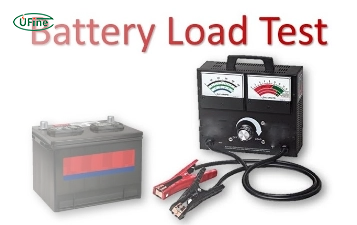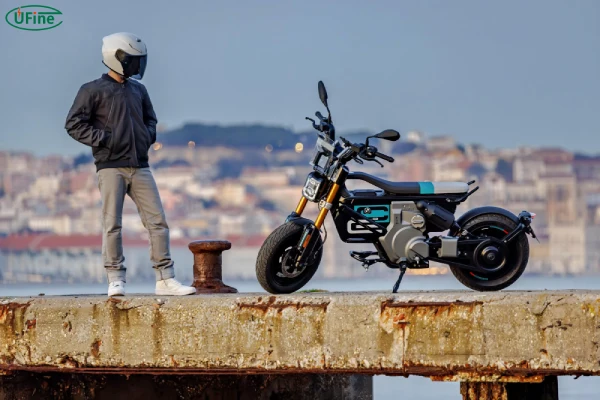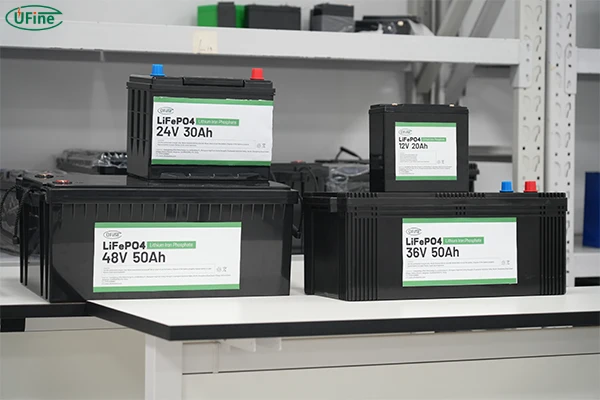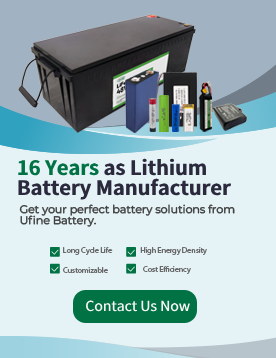
- Part 1. What is an electric motorcycle battery?
- Part 2. Electric motorcycle battery types compared
- Part 3. Electric motorcycle battery voltage explained
- Part 4. Electric motorcycle battery size guide
- Part 5. Battery capacity and weight
- Part 6. Electric motorcycle battery price (2025 guide)
- Part 7. How long do electric motorcycle batteries last?
- Part 8. Best batteries for electric motorcycles (By use case)
- Part 9. Electric motorcycle vs gas motorcycle: battery impact
- Part 10. How to choose the right battery
- Part 11. FAQs
Choosing the right battery is critical. It affects how far you can ride, how fast you accelerate, and how much you’ll pay over time. In this updated 2025 guide, we break down everything you need to know before buying a battery for your electric motorcycle—from types and sizes to pricing, lifespan, and the best options for different riding needs.
Part 1. What is an electric motorcycle battery?
An electric motorcycle battery is the energy storage unit that powers the electric motor. It replaces the engine and fuel tank in traditional motorcycles. The battery directly determines:
- Range (how far you can ride)
- Power output (acceleration + torque)
- Top speed
- Weight distribution
- Charging time
- Total ownership cost
In short, the battery is the most important—and the most expensive—component of an electric motorcycle.
Part 2. Electric motorcycle battery types compared
Different electric motorcycles use different battery chemistries. Each has unique strengths, price ranges, and performance characteristics.
1 Lead-Acid (SLA / AGM)
The oldest rechargeable battery type, still used in low-cost scooters.
Advantages:
- Cheapest option
- Easy to replace
- Suitable for light-duty use
Disadvantages:
- Very heavy
- Short lifespan (300–500 cycles)
- Low energy density → very short range
- Poor cold-weather performance
Best for: Budget scooters under 2kW
2 Lithium-Ion (Li-ion / NCM / NCA)
The industry standard for modern electric motorcycles.
Advantages:
- High energy density → long range
- Lightweight
- Good power output for acceleration
- Lifespan 800–1200 cycles
Disadvantages:
- Requires BMS protection
- Sensitive to extreme temperatures
- Higher upfront cost
Best for:
Commuters, mid-range e-motorcycles, performance machines
3 Lithium Iron Phosphate (LiFePO4 / LFP)
A safer and longer-lasting version of lithium technology.
Advantages:
- Extremely safe (thermal-stable)
- Very long lifespan: 2000–3500 cycles
- Withstands high temperatures
- Low degradation
Disadvantages:
- Lower energy density → slightly heavier
- Bulkier at the same capacity
Best for:
Long-term users, daily riders, hot climates, delivery fleets
4 NiMH (Nickel Metal Hydride)
Less common now but used in earlier EVs.
Advantages:
- More eco-friendly than lead-acid
- Stronger durability
Disadvantages:
- Heavy
- Low efficiency
- Rare in electric motorcycles today
Best for: Older models / legacy systems
Battery Type Comparison Table
| Battery Type | Energy Density | Lifespan (cycles) | Weight | Safety | Cost |
|---|---|---|---|---|---|
| Lead-Acid | ★☆☆☆☆ | 300–500 | Heavy | Medium | Low |
| Lithium-ion | ★★★★☆ | 800–1200 | Light | Medium | Medium |
| LiFePO4 | ★★★☆☆ | 2000–3500 | Medium | ★★★★★ | Medium-High |
| NiMH | ★★☆☆☆ | 500–800 | Heavy | High | Medium |
A Comparative Analysis of LiFePO4 vs. Lead Acid
Part 3. Electric motorcycle battery voltage explained
Voltage determines how much power the battery can deliver. Higher voltage = better acceleration and higher top speed.
Common Voltages in e-Motorcycles
- 48V – small scooters, delivery bikes
- 60V – mid-power commuters
- 72V – performance electric motorcycles
- 96V+ – high-performance / racing e-motorcycles
How Voltage Affects Performance
VoltageSpeedTorqueSuitable For48VLowMediumScooter, 30–45 km/h60VMediumStrongUrban commuting72VHighVery strongLong-range riders, hills96V+Very highExtremeSport e-motorcycles
Always match your battery voltage to your motorcycle’s controller and motor.
Part 4. Electric motorcycle battery size guide
Battery “size” refers to physical dimensions AND electrical specifications.
1 Common Physical Sizes
Electric motorcycles often use standardized modules or custom packs:
- 18650 cells
- 21700 cells
- Prismatic LiFePO4 modules
2 Common Pack Configurations (Ah × Voltage)
| Voltage | Typical Capacities (Ah) | Recommended Range |
|---|---|---|
| 48V | 20Ah / 30Ah / 40Ah | 30–70 km |
| 60V | 20Ah / 30Ah / 40Ah / 50Ah | 50–120 km |
| 72V | 20Ah / 30Ah / 40Ah / 60Ah | 60–160 km |
Higher Ah = longer riding distance.
3 How to Choose the Right Size
Check:
- Battery compartment size
- Motor power (kW)
- Daily riding distance
- Charging frequency
Part 5. Battery capacity and weight
Capacity (Ah / Wh / kWh)
- Ah = storage (basic measure)
- Wh = Ah × Voltage
- kWh = total usable energy
Example:
A 72V 40Ah battery = 2.88 kWh.
More kWh = more range.
Weight
- Lead-acid: very heavy
- Li-ion: lightest
- LiFePO4: balanced
A lighter battery improves:
✔ handling
✔ acceleration
✔ efficiency
Part 6. Electric motorcycle battery price (2025 guide)
Price depends on chemistry, voltage, capacity, brand, and BMS quality.
Typical 2025 Price Ranges
| Type | Price Range |
|---|---|
| Lead-Acid | $100–$400 |
| Lithium-Ion (NCM/NCA) | $500–$1500 |
| LiFePO4 | $700–$2000 |
| High-Performance Packs | $2000–$5000 |
Factors Affecting Price
- Capacity (Ah / kWh)
- Chemistry (Li-ion vs LiFePO4)
- BMS safety features
- Voltage (48V vs 72V vs 96V)
- Brand reputation
- Cycle lifespan
Higher-priced batteries often deliver lower cost-per-cycle.
Part 7. How long do electric motorcycle batteries last?
Battery life is measured in charge cycles.
Typical Lifespan
Battery TypeCycle LifeYears (daily use)Lead-Acid300–5001–2 yearsLithium-ion800–12002–4 yearsLiFePO42000–35005–8 years
Factors That Reduce Lifespan
- Overcharging
- Deep discharge (0–10%)
- High current draw
- Extreme heat (>45°C)
- Low-quality BMS
- Storing at 100% for long periods
Tips to Extend Lifespan
- Keep charge between 20%–80%
- Avoid high temperatures
- Use the correct charger
- Store at 50–60% if unused
Part 8. Best batteries for electric motorcycles (By use case)
✔ Best Overall Battery
Lithium-ion (NCM/NCA)
High energy density + long range.
✔ Best for Long Lifespan / Daily Commuters
LiFePO4 (LFP)
Up to 3500 cycles, excellent safety.
✔ Best Budget Option
Lead-acid
Only for low-speed motorcycles.
✔ Best for Performance Bikes
72V or 96V Lithium-ion Pack
High discharge rate = strong acceleration.
Part 9. Electric motorcycle vs gas motorcycle: battery impact
Electric motorcycles win in:
- Lower operating cost
- Instant torque
- No oil changes
- Quiet operation
- Eco-friendly
Gas motorcycles still offer:
- Longer range
- Faster refueling
But as battery technology advances, electric motorcycles are closing the gap quickly.
Part 10. How to choose the right battery
Confirm Voltage
Match your e-bike controller or motor: choose 48V, 60V, or 72V depending on system requirements.
Choose Battery Chemistry
Select Li-ion for higher power output, or LiFePO4 for improved safety and longer cycle life.
Determine Capacity
Daily commute 20–40 km: choose 20Ah–30Ah. Long-distance riding: choose 40Ah–60Ah capacity.
Check Physical Size
Ensure the battery fits properly inside your e-bike’s battery compartment or installation area.
Look for a Quality BMS
Your battery must include protections such as overcharge, short-circuit, temperature monitoring, and proper cell balancing.
Compare Price vs Lifespan
LiFePO4 batteries cost more initially but typically last 2–3× longer than standard Li-ion batteries.
Part 11. FAQs
1. What size battery does an electric motorcycle use?
Most use 48V/60V/72V with 20Ah–60Ah capacity.
2. How much does an electric motorcycle battery cost?
Between $500–$2000 depending on type and capacity.
3. How long do electric motorcycle batteries last?
Typically 3–8 years depending on chemistry and usage.
4. What is the best battery for electric motorcycles?
For most riders: Lithium-ion or LiFePO4.
5. Is LiFePO4 better than lithium-ion?
Safer and longer lifespan, but slightly heavier.
Related Tags:
More Articles

Battery Load Test: A Comprehensive Guide
Step-by-step battery load test guide for car, solar & industrial use. Learn how to load test a battery, interpret voltage charts, and avoid common mistakes.
The Comprehensive Guide to Battery Balancing and Battery Balancer
Discover how battery balancers improve lithium battery performance, lifespan, and safety. Learn types, functions, and tips to choose the right balancer.
What Is the Best Voltage for a Chainsaw Battery?
Compare 12V-80V chainsaw batteries for light pruning, medium firewood, and professional cutting. See best battery chainsaw with runtime charts and safety tips.
Lithium VS. Alkaline Batteries: A Comprehensive Comparison
Lithium batteries last 3–7× longer than alkaline and perform better in cold weather. Compare lifespan, cost, safety, and best uses to choose the right battery.
Comparing Lithium-Sulfur and Lithium-Ion Batteries: Which is Right for You?
Compare lithium-sulfur (Li-S) and lithium-ion batteries on energy, lifespan, cost, safety, and applications. Best choice for drones, EVs, and electronics.





